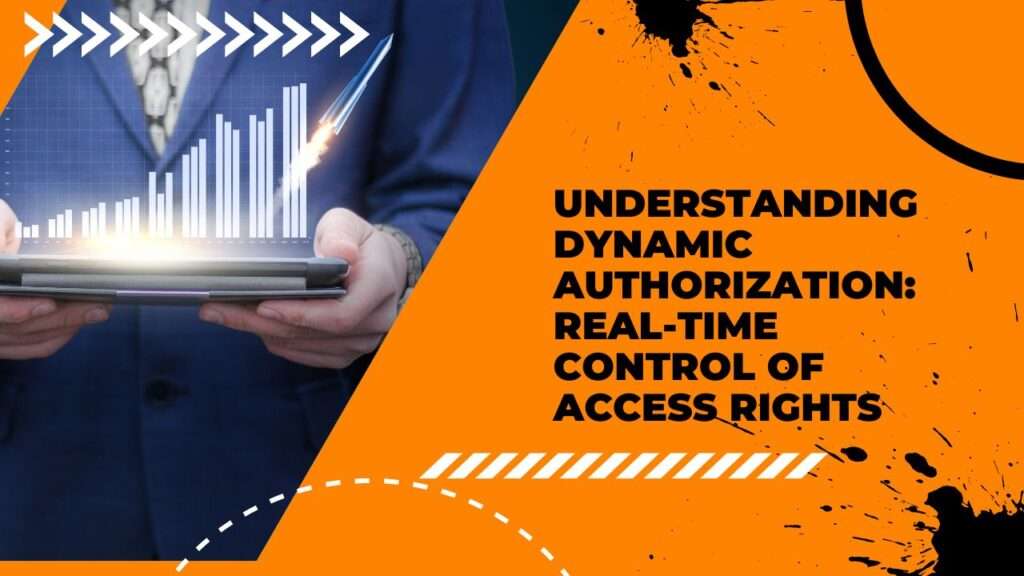In the digital age, data security has become more important than ever before. With a vast amount of information stored in various platforms and devices, controlling access to sensitive data is crucial for any organization. That’s where dynamic authorization comes into play – granting or denying access rights in real-time based on specific attributes and conditions. In this blog post, we’ll delve deeper into understanding dynamic authorization to provide you with insights on how it can enhance your organization’s security posture, improve compliance measures and ultimately save you from potential breaches.
Introduction to Dynamic Authorization
Dynamic authorizations are powerful tools for managing access rights in real-time. It provides granular control over who can access what resources, and when they can access them. This makes it an ideal solution for organizations that need to constantly adapt their security posture to changing threats.
It is a relatively new concept, and as such, there is still some confusion about what it is and how it works. In this article, we’ll dispel some of the myths about dynamic authorization, and help you understand how it can be used to secure your organization’s data.
Benefits of Dynamic Authorization
It provides many benefits over traditional, static authorization models. With dynamic authorization, organizations can grant or revoke access rights in real time, based on changing circumstances. This allows for a much more granular and flexible approach to security, and can help prevent data breaches and other security incidents.
Dynamic authorization can also help organizations meet compliance requirements, as it provides a comprehensive record of who has accessed what data and when. This can be invaluable in the event of an audit or investigation.
Overall, dynamic authorization provides a more effective and efficient way to manage access rights, while also improving security and compliance.
Understanding Contextual Attributes and Policies
Dynamic authorization is a process of granting access rights to users in real-time, based on contextual attributes and policies. Contextual attributes are factors that can be used to determine a user’s identity, such as their location, time of day, device type, etc. Policies are rules that define how access should be granted or denied based on these attributes.
In order to understand dynamic authorization, it is first important to understand the concept of least privilege. This principle states that a user should only be given the bare minimum amount of access necessary to perform their job. This is important because it helps to prevent accidental or unauthorized changes from being made to critical data or systems.
Least privilege is typically enforced through the use of role-based access control (RBAC). With RBAC, users are only granted the permissions they need for their specific role. For example, a user who only needs read-only access to a database would not be given write permissions.
Dynamic authorization takes this concept one step further by also taking into account contextual attributes when determining whether or not to grant access. For example, a user might have read-only access to a database during normal business hours but be denied access altogether if they try to access it after hours. Or, a user might be allowed to login to a system from their workstation but not from their personal laptop.
This additional layer of security provides increased protection against accidental or unauthorized changes while still allowing users the flexibility they need to do their jobs.
How to Implement Dynamic Authorization in Your Organization?
In order to implement dynamic authorization in your organization, you will need to first understand the concept and how it works. Dynamic authorization is a process of granting or denying access to resources in real-time, based on the user’s current situation and context. This means that the decision of whether or not to allow access to a resource is made at the time of the request, rather than being predetermined by a static set of rules.
There are several benefits of using dynamic authorization, including improved security, more efficient use of resources, and better compliance with regulatory requirements. In order to implement dynamic authorization, you will need to have an understanding of who needs access to what resources, and what their current situation and context are. You will also need to have a system in place for making decisions about whether or not to grant or deny access to resources in real-time.
When implementing dynamic authorization, it is important to consider the following factors:
-The sensitivity of the data: If the data is sensitive, you will want to be sure that only authorized users have access to it.
-The frequency of changes: If the data is subject to frequent changes, you will want to ensure that those changes are reflected in the authorization decisions made in real-time.
-The number of users: If there are a large number of users, you will want to make sure that the process of making authorization decisions is efficient and scalable.
Dynamic authorization can be implemented by using either software or hardware solutions. Software solutions usually use an identity and access management system to make authorization decisions in real-time, while hardware solutions typically require additional components such as tokens or cards.
It is important to keep in mind that dynamic authorization is only one component of a comprehensive security strategy. It should be used in conjunction with other measures such as encryption, authentication, and user education. By taking these steps, you can ensure that your organization’s data and resources are secure and protected from unauthorized access.
Challenges & Best Practices for Dynamic Authorization Implementation
When implementing it, there are a few challenges to keep in mind. First, because dynamic authorization is based on real-time conditions, it can be difficult to predict all the potential conditions that need to be considered. Second, designing an effective authorization policy requires a good understanding of the data and how it will be used. Lastly, making sure the policy is enforced consistently across all systems can be tricky.
Despite these challenges, there are some best practices that can help make this implementation go more smoothly. First, start by identifying the key data and access points that need to be controlled. Then, create a set of rules that cover all potential conditions. Finally, test the policy thoroughly before rollout to ensure it works as intended. By following these steps, you can create an authorization system that provides real-time control of access rights while still being easy to manage and understand.
Alternatives to Dynamic Authorization
Organizations face many challenges when it comes to managing access rights, especially as their user base and data sets grow. This is one solution that can help address these challenges, but it may not be the best fit for every organization. In this section, we’ll explore some of the alternatives to dynamic authorization.
One alternative to dynamic authorization is static authorization. With static authorization, access rights are assigned to users ahead of time and do not change based on real-time conditions. This can be a good option for organizations with simple access requirements and limited data sets. Another advantage of static authorization is that it can be easier to manage and audit than dynamic authorizations.
Another alternative is rule-based authorization. With rule-based authorization, access rights are determined by a set of rules that are applied to each user request. This can be a more flexible solution than static authorization, as it allows for different rules to be applied in different situations. However, it can also be more complex to manage and audit than dynamic authorization.
Ultimately, the best solution for an organization will depend on its specific needs and requirements. Organizations should carefully evaluate their options before deciding on a particular approach to managing access rights.
Conclusion
Dynamic authorization is an important tool for organizations to ensure the security of their data. By implementing dynamic authorization, organizations can quickly adjust access rights in response to changing conditions and emerging threats, while still maintaining compliance with applicable laws and regulations. With its ability to provide real-time control over user access rights, dynamic authorization is an invaluable asset for organizations looking to secure their sensitive information from unauthorized parties.

